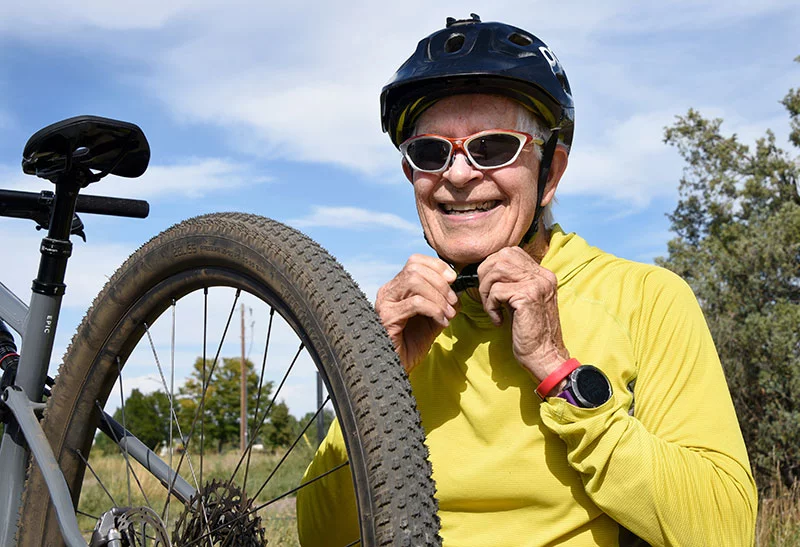
The three tattoos on Bob Nicholson’s right leg — a foot, a kayak and a bike — remind him of not just the outdoor passions that keep the 81-year-old on an intense fitness routine that would exhaust most half his age, but also the exact spots where he can measure the girth of his leg to help keep his lymphedema under control.
“I feel really good,” said the incredibly fit octagenarian resident of Berthoud in northern Colorado.
“I take a regimen of vitamins. I exercise. I know my body really well. I’m well educated on what I need to do to stay healthy, I do a lot of reading and research, and I’m proactive, which enables me to continue my lifestyle.”
Bob manages his lymphedema the same way he enjoys the recreation and outdoor activities that have become part of his everyday life: with discipline, precision and gusto.
“He is doing fantastic,” said Joni Miller, physical therapist and lymphedema specialist at UCHealth The Wellness Place – Harmony Campus in the Ft Collins Cancer Center. “He kayaks, runs, bikes and helps care for his 5-year-old granddaughter. His story is truly inspirational.”
Traditionally, a progressive condition, lymphedema can be an unfortunate and sometimes crippling side effect for those who have undergone cancer treatments. Bob has been dealing with it since March 2019, a year or so after he was treated for prostate cancer.
But it doesn’t have to be a life game changer, and it hasn’t been for Bob. He views his past battle with cancer and current one with lymphedema as just obstacles: a bump on the road while he bikes, a particularly gnarly fast current while he kayaks or an uphill climb while he jogs.
For a man who knows where to find a nearby gym in the many different U.S. cities he travels to, has kayaked the Grand Canyon six times, runs two to three miles a day, works out five times a week and then follows that up with a long bike ride, and completed a half-marathon earlier this spring, lymphedema was just another challenge to overcome.
“It’s not a big deal if you keep it under control. But you need to keep it under control,” he said.
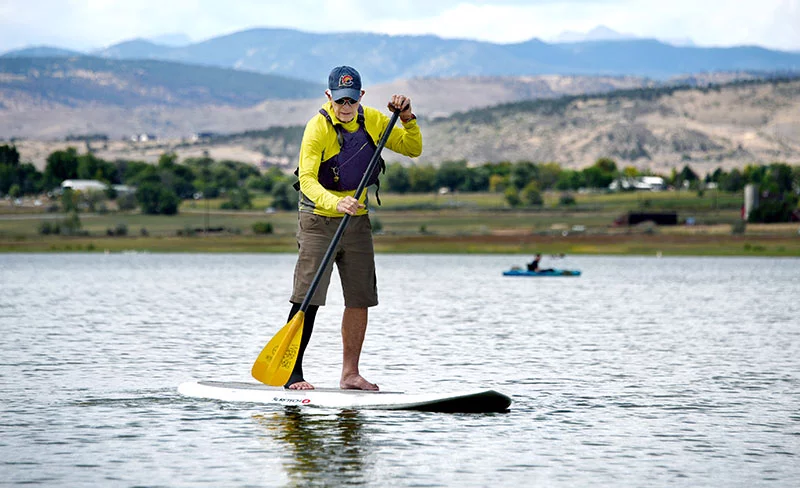
What is lymphedema?
Lymphedema is chronic swelling in tissue resulting from trauma to the lymphatic system, a group of tissues and organs in our body that help us stave off infection and disease. The lymphatic system allows for healthy maintenance of body fluid levels.
In a healthy lymphatic system, that fluid funnels into the vascular system, where it is eliminated as waste. But for patients whose lymph nodes have been removed or damaged through surgery, chemotherapy or radiation, that “one-way system” of fluid drainage gets retained in the body and causes swelling in nearby tissue.
Certain cancers are at higher risk for lymphedema, such as breast, melanoma, head and neck cancers, prostate and some gynecological cancers. The greater the trauma to the lymphatic system, the greater the risk of developing lymphedema. Once the trauma has occurred, the risk of developing lymphedema never goes away.
However, the chances of developing lymphedema decrease over time, which is why it’s important to support the lymphatic system throughout cancer treatments with help from a certified lymphedema therapist, doctors said.
“It’s an unfortunate side effect that a lot of cancer patients experience. But our surgeons are doing a really good job of limiting lymphedema by reducing the number of lymph nodes removed whenever possible. Through PT, we try to be proactive about getting people the help they need before it gets debilitating,” Miller said.
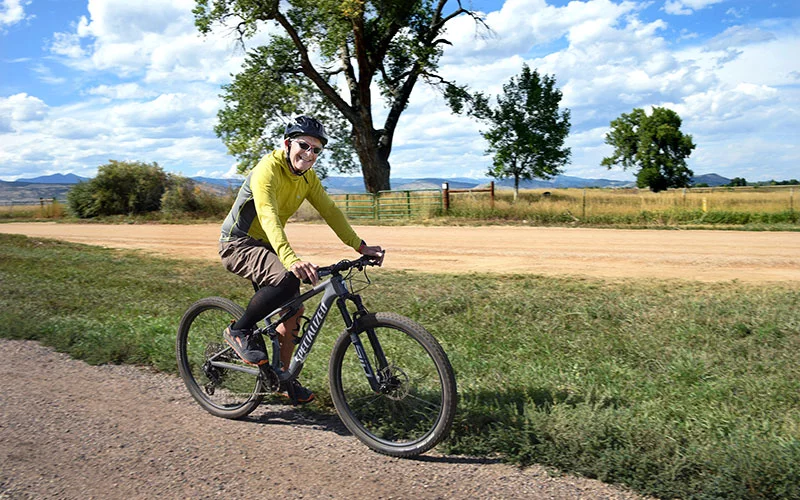
Signs and symptoms of lymphedema include heaviness or fullness in a specific area, tightness of skin and tissue, visible swelling, difficulty fitting into clothing or shoes, and/or changes to the fit of jewelry or clothing.
“For some people, fluid builds up slowly and they don’t notice, while others do. In general, it’s not painful, but there is a feeling of heaviness or fullness and decreased joint movement, and it becomes hard to run, walk and be active,” she said. “The more fluid there is, the harder those activities are.”
Her job is to help patients maintain physical activity and keep them as healthy as possible with the tools they need to manage their lymphedema so they can enjoy an active lifestyle.
Bob contends with prostate cancer amid globe-trotting adventures, then faces lymphedema
Bob was too busy on his many adventures to notice that he was afflicted with lymphedema. It wasn’t until his daughter noticed a photo he sent from halfway across the world that he realized something might be wrong.
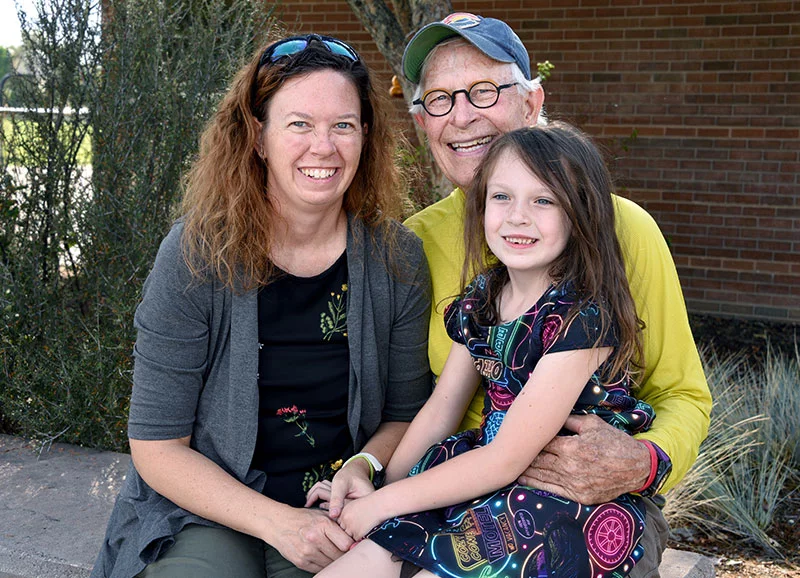
During an annual physical in summer 2017, a high PSA level prompted his doctor at UCHealth Medical Center of the Rockies in Loveland to order additional testing.
When a follow-up biopsy came back positive for prostate cancer, Bob would eventually have his prostate removed in January 2018 at UCHealth University of Colorado Hospital on the Anschutz Medical Campus.
But before that, his cancer treatment would have to wait. During the six-month interval between the biopsy and his surgery, Bob had things to do: an African safari, bike trips in West Virginia and Oregon, running a 10K in the BOLDERBoulder, and a kayak trip in Desolation Canyon in eastern Utah. There was also a trip to Iceland.

With his travels concluded, he underwent robotic surgery to remove his prostate and seven nearby lymph nodes. True to character, he didn’t give himself much time to recuperate and recover. Two months later in March, he was in New Zealand on a bike trip, and he followed that up in June with a cycling trek in France and England.
Around the same time, he began a two-year hormone therapy regimen that included monthly injections of Zytiga and Lupron, which suppresses the production of testosterone and improves the survival rate for patients who have had prostate cancer.
To no one’s surprise, though, he didn’t let the treatments interfere with his travels, which may have been just as well. Exercise has been found to be a key component in men like Bob recovering from prostate surgery who are on certain testosterone-reducing hormone therapy, as it typically causes muscle atrophy and weakness.
That was not an issue, though, as in July, there was a kayak trip on the Snake River, and he was only slowed down in August and September by eight weeks of daily radiation. But not to worry, by October, he was biking again on the East Coast and Mid-Atlantic regions, and in February and March 2019, he was biking in Chile and hiking in Patagonia.
But after sending pictures to his daughter, she was worried about how his right leg appeared in the photos.
“It didn’t hurt, but it was larger than it should be. I didn’t think too much about it, but when I came home, I met with my doctors who told me I had lymphedema, and that’s when my journey started with Joni.”
Treatment options for lymphedema
Once lymphedema is identified, there is a treatment phase and a maintenance phase. The treatment phase consists of regular physical or occupational therapy sessions that include manual lymph drainage, compression bandaging, exercise, education about lymphedema, skin care and risk reduction practices. Also, compression garments will be recommended for long-term management.
During the maintenance phase, patients are encouraged to exercise, practice diligent skin care, wear compression garments and schedule follow-up visits.
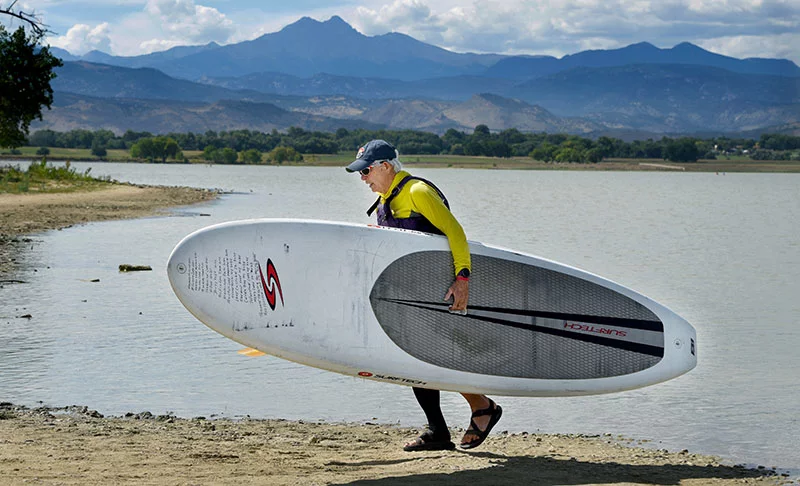
When Bob returned from South America in March 2019, his right leg contained 20% more fluid retention, or edema, than his left. (Edema is the buildup of fluid in body tissue, usually the arms and legs.)
He was referred to Miller, and he came in multiple times per week to get his leg wrapped to reduce the inflammation in a procedure called complete decongestive therapy, or CDT. Through this manual lymph drainage/massage technique, the excess fluid is pushed away from the swollen limb toward the normal areas of the body where it can be removed.
“We try to determine how progressed the lymphedema is by measuring the girth of the leg, and based on that, we create a treatment plan,” Miller said.
In a month’s time of working with Miller, Bob’s edema was down to zero through the help of bandaging and massages. In addition, she taught him how to keep his lymphedema controlled through bandaging on his own, wearing custom-made compression garments and using a lymphatic pump.
Bob’s compression garments include a fitted sleeve worn during the day from his right foot to his groin, and a softer one at night that is not as tight. Both help to soften his leg tissue, keep his body fluids circulating and prevent the lymphatic flow from becoming stagnant.
Another tool at his disposal is a pump that massages and stretches his skin to stimulate his lymphatic system to increase its pumping efforts and clean out toxins and debris. He comes back to see Miller every three months, during which any excess tissue fluid is measured by a bioimpedance device that works like a scale, as it receives hundreds of frequencies from the bare surfaces of his feet and hands.
“He’s doing great on his own,” Miller said. “He’s committed, he has a positive attitude, and he’s learned how to manage this because it’s worth it to him so he can do all these wonderful other things in his life.”
After his lymphedema diagnosis, Bob didn’t allow his condition to slow him down
Born and raised in Ohio, Bob was an educator for 35 years, many of them as a school principal. After one of his two daughters moved to Colorado, he followed in 2012.
“I love it here – I love every minute of it. My day is filled up with running, being in the gym, biking and kayaking – and what better place to do it.”
Though his lymphedema is pretty much under control, he still connects with Miller at the hospital several times a year for checkups, and at the occasional marathon, since she, too, is a runner.
While he had to miss the 2024 Colorado Marathon in Fort Collins since he had an infection in his leg, he retrained this year, and the duo competed there together in May. After she completed the 26-mile race, she met him when he crossed the finish line at the end of his first-ever half marathon at the age of 80.
“It was pretty cool,” she said. “I was so proud of him.”
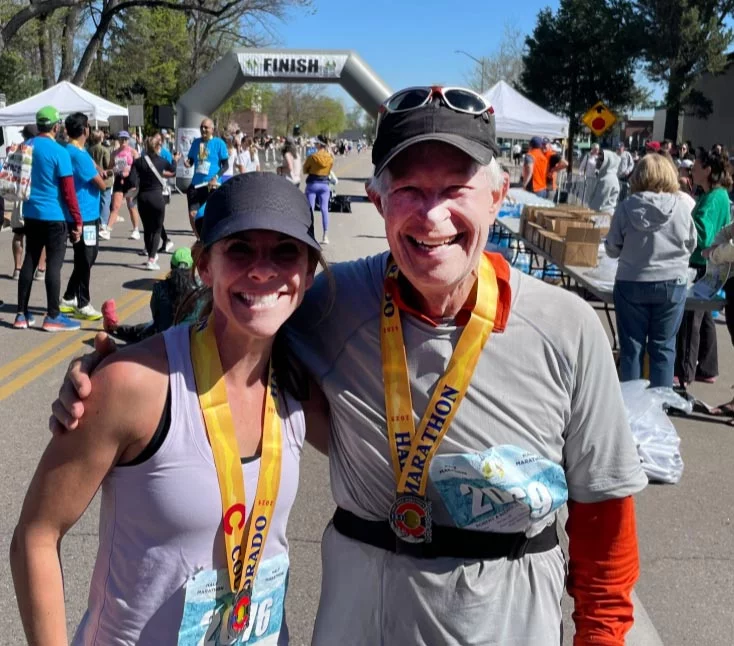
Since his successful lymphedema treatment, Bob has continued to see the world via bike, kayak and hiking. He wheeled through Cambodia and Thailand in summer 2022, and the following summer, he kayaked 227 miles in the Colorado River through the Grand Canyon over 15 days.
Along with his recreation activities, he stays young by helping with his 5-year-old granddaughter, who lives nearby, taking her to school and watching her once a week.
“I maintain that is what makes life so much fun for me: It’s new and fresh because of her,” he said.
A future full of more whitewater and miles to go as a runner and biker despite lymphedema
As a concession to Miller, Bob promised to quit Class 4 whitewater rapids while he kayaks, since he would be at risk for an infection if he got a puncture in his leg. (He did do a Class 3 once, though, he said and laughed.)
But he is serious about staying in shape, eating nutritious meals and making sure his lymphedema stays under control with massages, wearing his compression garments and using his manual pump when he notices signs of fluid retention in his leg.
Which is where the tattoos come in handy. The three places on his legs are the exact spots that he measures several times a week to reassure himself.
I keep it under control so I know where I am; with all the airplane flights, the running, biking and kayaking, it’s a good way to remind me.”
He advises others dealing with the condition to watch their diet, stay hydrated and avoid liquor.
“People need to be active, and they need to adhere to whatever their PT tells them to do to keep on track. After that, just live your life the best you can.”
